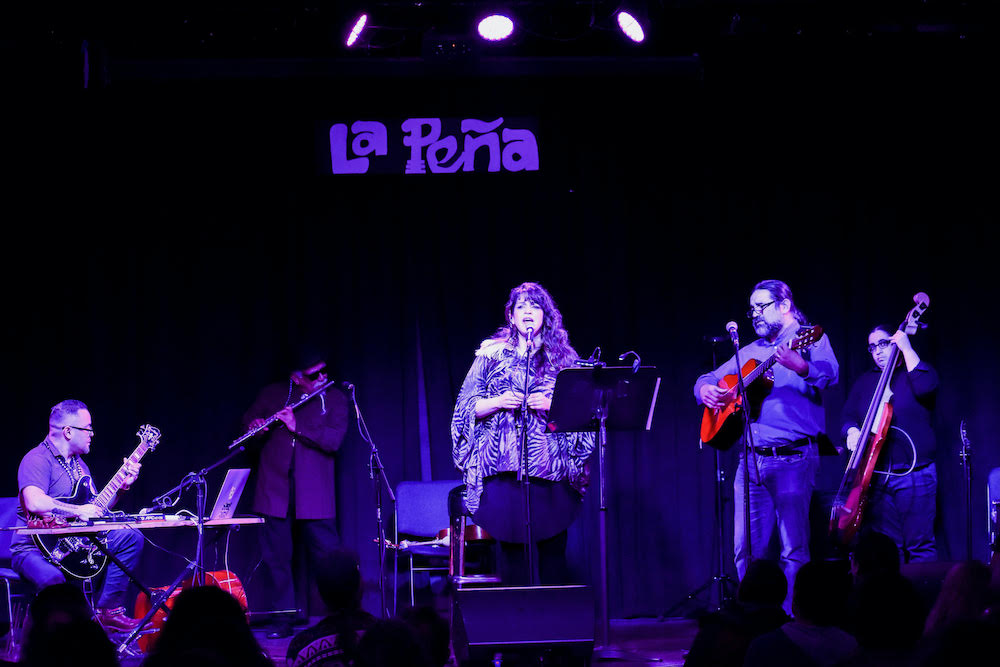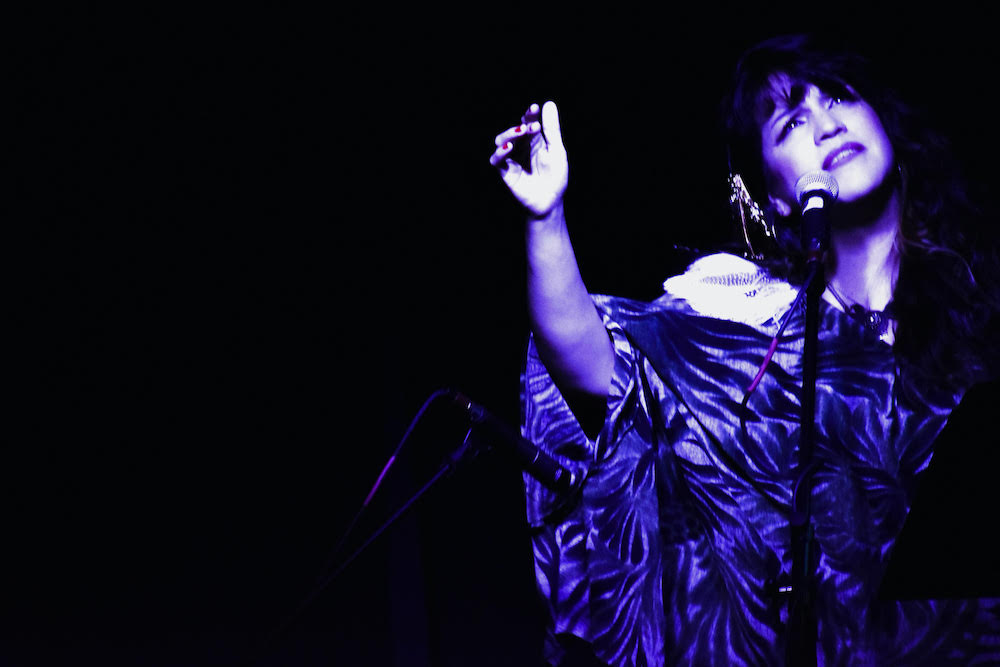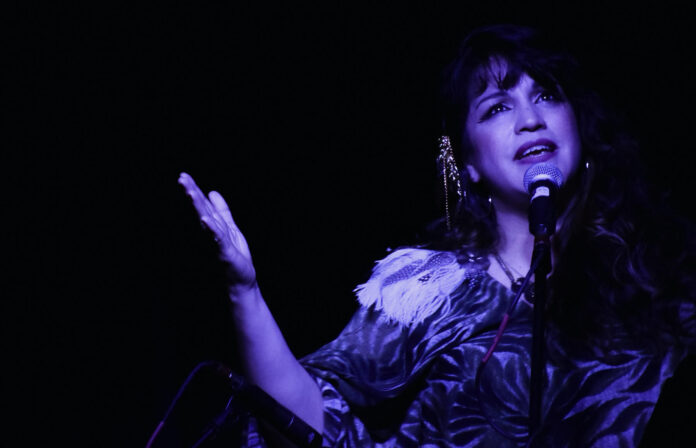Californian musician and cultural worker Liliana Herrera grew up in a bicultural family with strong oral traditions. She treasures an audio recording of herself at age two, singing with her father. From her mother, she learned the elation that comes from reciting poetry aloud. Despite growing up in a society that attached shame to speaking anything other than English, Herrera relished speaking Spanish. From her oral roots emerged a fascination with ancestral history that only grew in adulthood. She established sturdy connections to not only Mexican folkloric music, but to her state’s rich Latinx history, steeped in symbols, myths, and hard truths.
In 2019, drawing upon these influences, Herrera workshopped a production named Golondrina: Andanzas por California. Supported by a scholarship from the National Endowment for the Arts, she crafted a multi-sensory, kaleidoscopic storytelling show, incorporating multiple musical genres, from boleros and rancheras to the 1960s and ’70s protest songs created in response to dictatorships in Chile and Argentina. The work’s poetic references to the golondrina—specifically, the migrating swallows of Capistrano—spoke to human migration, presenting a pressing question: Why is the migration of birds and other species revered, while that of Latinx and other marginalized peoples criminalized?
Brava! For Women in the Arts presents a remounting of the work on Fri/3 and Sat/4 at the Brava Theater Center. The two-act ¡Golondrina! A Funkloric Odyssey through California/Una odisea funklórica por California features as performers Herrera herself, along with Ayla Davila, David R. Molina, Andrea Rodriguez, Rafael Herrera, and special guests Francisco Herrera and Miguel Govea.

In a phone interview with 48hills, Lilliana Herrera says, “After the initial unexpectedness of the pandemic had passed, the rise of violence and war in many parts of the world and continuation of colonization resumed. I see there are parallels in the present day of patterns that have gone on since colonization of the Americas.”
But at the same time, Herrera finds inspiration in the resilience of her people, in both modern-day and previous eras. Despite the genocide and colonization of Indigenous people in California, she recognizes a hunger for celebration as more community members mobilize: “I’m a cultural worker and see awareness of things from language justice to dismantling walls to re-constructing those walls as bridges. As an artist, my motivation is to bring people together to celebrate our commonalities. I’m bringing people together to see the history and to not get stuck in the trauma or the current rhetoric about our divisions, culturally or linguistically.”
Many times during the last five years, people have told Herrera that the show needed to be remounted, to tour university campuses, be seen in community centers. Their enthusiasm has heightened her curiosity about and determination to share her ancestry and Indigenous heritage. “My consciousness has been pulled to open myself up, to investigate, to share my work with people in the community who are from my culture and with marginalized people all over the world. To participate is a privilege. I feel an urgency to tell these stories so people in marginalized communities feel honored.”

One new element that has been added to ¡Golondrina! is dancer Andrea Rodriguez’s portrayal of the swallow. In various scenes, her bird is a kinetic representation of storytelling traditions and Herrera’s own link to her mother. “My mother passed away three years ago. She always called me Golondrina, and told me I could never stay put and must always keep moving forward. Reminding my people who long to be cherished in this anti-immigrant society they have contributed hugely—celebrating that, honoring her—has kept me pushing to present this show,” says Herrera.
As is to be expected, Herrera says the hardest topic to address in ¡Golondrina! was racism against the Latinx community. But again, she was inspired by her people’s strength, in one case, a tribe who passed memorized bird songs like oral batons from one generation to the next. “Those bird songs survived genocide, and the power of that is my story. The same is true for textiles. When you see a pattern on a textile, it is woven with the histories of great-great-grandmothers, great-great-grandfathers. It cannot be erased. Appreciating what is left behind and passing it along to descendants is the path toward healing,” she says.
“I would love for folks who see the show to inquire about there own histories,” Herrera continues. “Especially people whose Native roots have been erased or suppressed by White Supremacy, or people who have been disconnected from their ancestors. If we heal that disconnection, we can come together and recognize our innate, in-common wisdom. We will leave curious, with hope, not stuck in pain, moving together. The end of the play is a moment for continuation, for new connections to community.”
¡GOLONDRINA! A FUNKLORIC ODYSSEY THROUGH CALIFORNIA/UNA ODISEA FUNKLÓRICA POR CALIFORNIA runs Fri/3 and Sat/4. Brava Theater Center, SF. Tickets and more info here.






